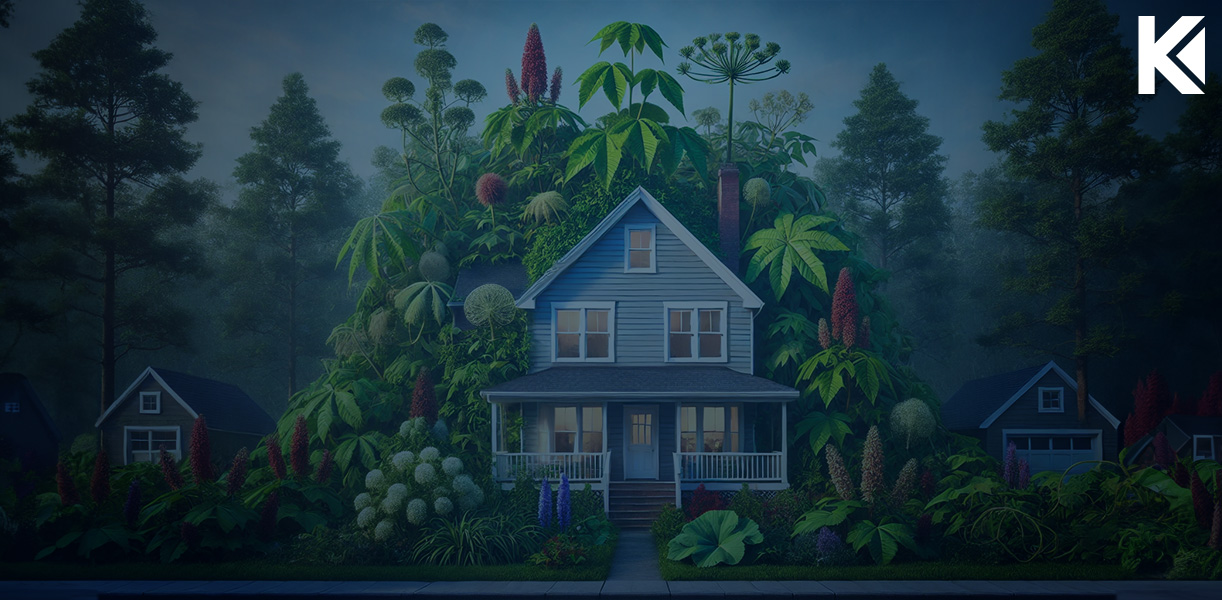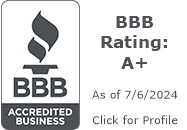Some invasive plants are not just unsightly; they are dangerous, posing significant threats to human health and the structural integrity of homes. This blog explores how to identify and manage the most harmful invasive plants to ensure your property remains safe and your garden thrives.
Types of Dangerous Invasive Plants
- Poison Ivy, Oak, and Sumac: Known for causing severe allergic skin reactions, these plants contain urushiol, a compound that triggers itching, rashes, and blistering.
- Giant Hogweed: Its sap, when combined with sunlight, can cause phytophotodermatitis, resulting in painful burns and long-lasting scars.
- Japanese Knotweed: This invasive species is notorious for damaging building foundations, roads, and flood defenses through its strong and relentless root growth.
- Kudzu: Often called “the vine that ate the South,” Kudzu can overgrow trees and structures, leading to damage due to its heavy weight and dense coverage.
- Puncturevine: Known for its spiky seed heads that can injure animals and people, this plant can also puncture bicycle tires and footwear.
- Stinging Nettle: While not as destructive to properties, stinging nettle can cause painful stings that lead to itching and irritation due to its fine hairs filled with irritants.
Health Risks Associated with Dangerous Invasive Plants
- Skin Irritations and Allergic Reactions: Contact with certain invasive plants can result in immediate skin irritation or long-term allergic reactions.
- Toxicity: Some plants are toxic if ingested, posing risks to children and pets who might come into contact with them.
- Physical Injury: Invasive plants like puncturevine and giant hogweed are physically harmful, causing injuries from their thorns and sap respectively.
Impact on Home and Property
- Structural Damage: Invasive plants like Japanese Knotweed can grow through concrete, damaging foundations, plumbing, and walls.
- Plumbing Issues: Roots from invasive plants can infiltrate and block drainage systems.
- Decreased Property Value: Infestations can lower property value due to the difficulty and expense required to eradicate serious plant problems.
Management and Eradication Techniques
- Chemical Treatments: Herbicides can be selectively applied to combat these invasive plants, though care must be taken to avoid harming non-target plants and animals.
- Physical Removal: Digging out invasive plants can be effective but often requires persistence to remove all root material to prevent regrowth.
- Professional Assistance: For invasive and hazardous plants like giant hogweed and Japanese Knotweed, professional removal is recommended to ensure complete and safe eradication.
Preventive Measures
- Regular Inspections: Regularly check your property for signs of dangerous invasive plants and act quickly to control them.
- Landscaping Choices: Opt for native plants that compete better with invasive plants and maintain healthy soil to discourage plant growth.
- Use of Barriers: Employing physical barriers can prevent the spread of root systems from invasive plants.
Conclusion
Effectively managing dangerous invasive plants involves understanding the specific threats they pose and implementing a combination of chemical, physical, and preventive strategies to control their spread. By staying informed and proactive, you can protect both your health and your home from these invasive species. At Kwik Mortgage Corporation, we emphasize the importance of safeguarding your property and well-being through informed and proactive measures.
Disclaimer:
The information provided is for educational purposes only and is not intended as professional landscaping or legal advice. Consult with a professional for specific concerns.






